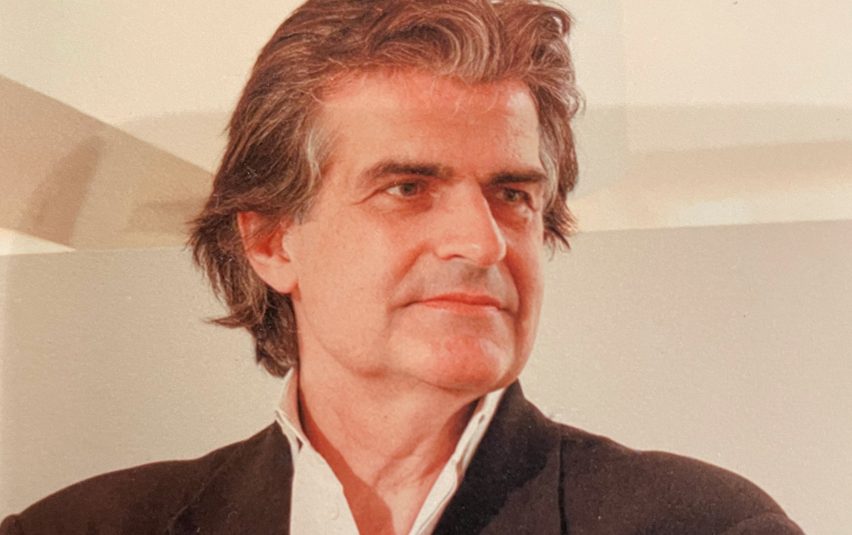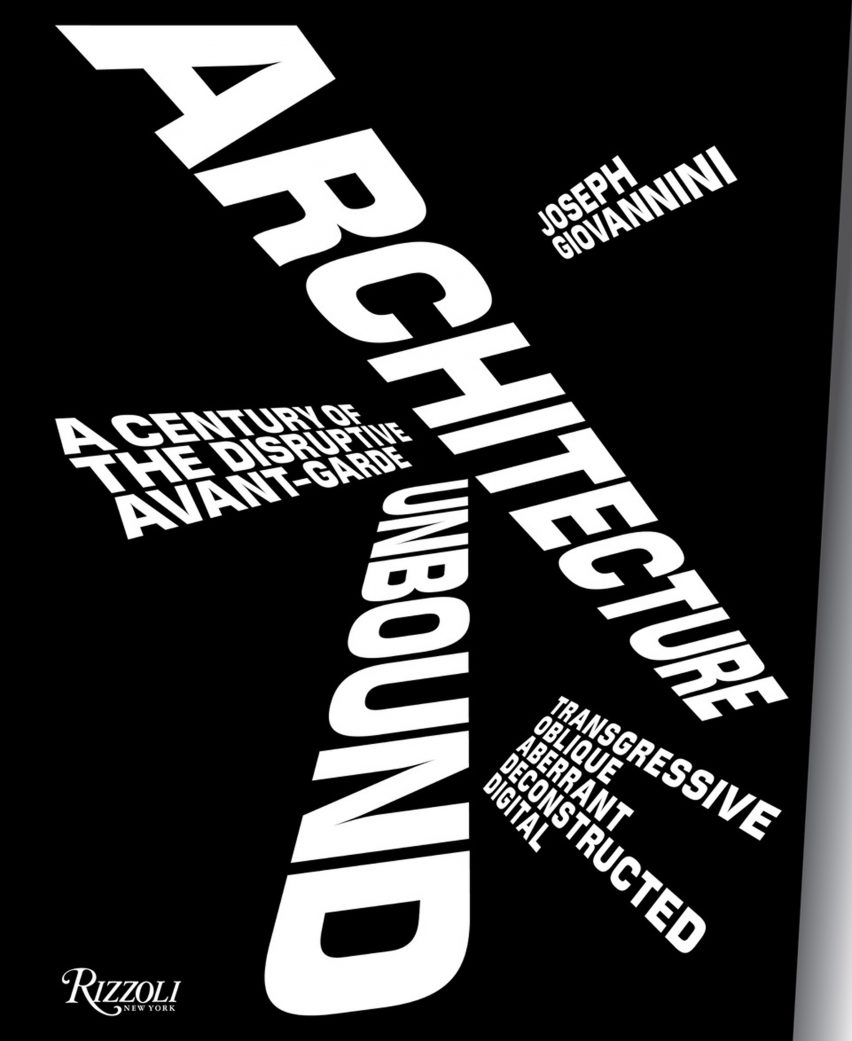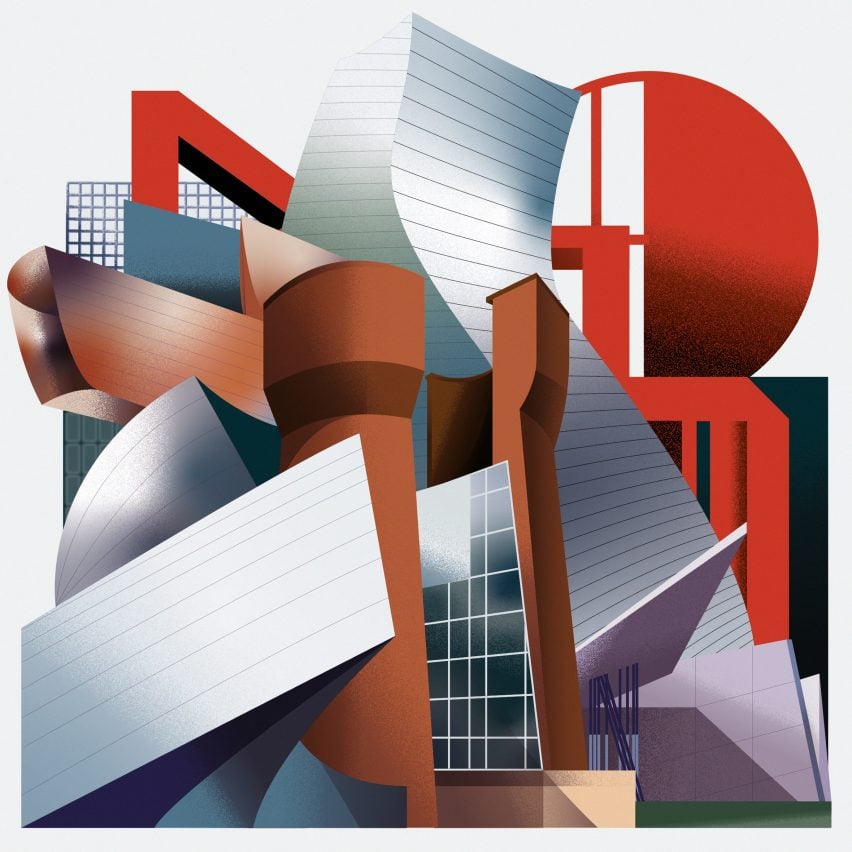
"Story of deconstructivism was never told fully or even accurately" says creator of term
Architecture critic Joseph Giovannini, who coined the term deconstructivism, sets the record straight about its meaning in this interview as part of our series on the style.
Giovannini believes that the term he invented was misunderstood by the curators of the seminal Deconstructivist Architecture exhibition in 1988 at the Museum of Modern Art (MoMA). His recently released book Architecture Unbound: A Century of the Disruptive Avant-Garde aims to tell a more complete story of the style.
"The show borrowed the idea from others and the term from me"
"The story of deconstructivism was never told fully or even accurately in the famous and infamous Deconstructivist Architecture show at MoMA in 1988," Giovannini told Dezeen.
"Deconstructivism as a name, which I coined, was corrupted by its misuse in the show."
A year before the MoMA show, Giovannini invented the term to describe a group of architects, including Zaha Hadid, Peter Eisenman, Rem Koolhaas and Bernard Tschumi, who were revisiting avant-garde architecture ideas from the 1920s.

"Last year, in discussing with editors and architectural colleagues a book I was proposing on the work of these avant-garde architects, I devised the word 'deconstructivism', a conflation of the words 'deconstruction' and 'constructivism'," he wrote in the New York Times in June 1988.
"The word has become the accepted name for the movement."
Although MoMA's seminal Deconstructivist Architecture exhibition, which opened later that month, included many of the same architects observed by Giovannini, he was critical of its contents.
"Put together in haste, by fax, by curators who had not even visited most of the architect's offices to see the work first hand, the show borrowed the idea from others, and the term from me, without fully understanding its roots or even knowing that there were many more players than they named," he explained.
"Their grasp of the subject was narrow and shallow."
"I wanted to dissociate my book from their flawed interpretation"
Despite his criticism of the exhibition's depth, Giovannini acknowledges that most people's understanding of deconstructivism is now largely based on MoMA curators Philip Johnson and Mark Wigley's interpretation.
Giovannini wrote his book Architecture Unbound: A Century of the Disruptive Avant-Garde to tell a wider story of avant-garde architecture that features more architects than the seven in the MoMA exhibition.
"The MoMA story has remained the standard by which the movement is understood, but it was incomplete," he said.
"Architecture Unbound: A Century of the Disruptive Avant-Garde is a corrective."
Although Giovannini coined the term deconstructivism, he decided not to use it in the title of the book as the word is so closely associated with the MoMA exhibition.
"I wanted to dissociate my book and the longer history of Deconstructivism from their flawed interpretation so that the material would be perceived without the show’s distortions, limitations, and the pejorative connotations that the name consequently acquired," he said.
"In the subtitle I do, however, acknowledge deconstructivism itself as one of other major influences impacting the work: transgressive, oblique, aberrant, deconstructed, digital," he continued.
"But even this expansive subtitle could have included: chaotic, emergent, vectorial” and other tributaries of thought. Deconstructivism was an emblematic term implying there were many crossroads intersecting in the work of these architects."
"It expands the influences beyond the too literal interpretation of the term"
According to Giovannini, the term was taken too literally by MoMA and others. Although it combines two existing terms, he wanted the new word to express all of the avant-garde thinking that was taking place at the time.
"The book expands the list of architects involved in the movement, and it expands the roots and influences beyond the too literal interpretation of the term deconstructivism as a fusion of deconstruction and constructivism," he explained.
"Its much larger cultural history traces to mathematicians challenging Euclid in the 19th century and to scientific, artistic and philosophical advances around world war one and after world war two," he continued.
"Architecture Unbound brings the story up to the present and includes the digital revolution as it relates to deconstructivism."
Architecture Unbound aims to reconsider deconstructivism
While many view deconstructivism as a historic style that emerged in the early 1980s and was popularised over the next two decades, Giovannini believes that we are only now reaching the height of deconstructivist architecture.
This means that it is an ideal time to reinvestigate how the style has developed over the past century.
"Because of repressive historical events, not least the hegemony of Bauhaus modernism, the white-hot artistic movements and associated scientific and philosophical advances in the early 20th century did not manifest themselves architecturally in a collective, concerted way until well into the second half of the century," he explained.
"Gradually, a few intrepid architects opened the field, their marginalized practices slowly entering the mainstream, and after the turn of the millennium, with the help of the computer, the practices became major forces designing and building climax structures of great complexity and cultural value," he continued.
"Over that time, the size of buildings expanded from small to monumental, and so extended the narrative to a high point in its historic arc. The book ends on that apex, and asks, Where next?"

Deconstructivism is one of the 20th century's most influential architecture movements. Our series profiles the buildings and work of its leading proponents – Eisenman, Gehry, Hadid, Koolhaas, Libeskind, Tschumi and Prix.
Read our deconstructivism series ›